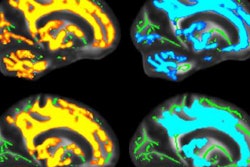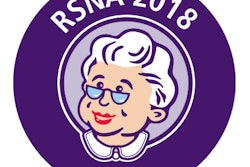
MRI can be scary for pediatric patients, but Vanderbilt Children's Hospital in Nashville, TN, has found that a little extra attention can go a long way toward easing fears. A Vanderbilt initiative called Patients Awake While Scanned (PAWS) has helped nearly all young patients to complete MRI scans without sedation.
PAWS features a child life specialist who works one-on-one with children and parents to inform and prepare them for the MRI experience. Over the course of the study period last year, the tutorial and follow-through helped clinicians complete sedation-free MRI scans on 95% of otherwise fidgety or anxious children.
"Sometimes [sedation] is unavoidable, but the purpose is to see how much we can reduce sedation by coaching these children and their parents about what to expect from the MRI experience," said Dr. Ashish Parikh, who led the study during his fellowship last year at the hospital. "Having someone there to coach them and keep them calm helps to get a good scan from all that."
Patient-friendly sedation
MRI scans for pediatric patients have risen over the last decade with the goal to limit CT usage, particularly in patient populations that are more vulnerable to the effects of radiation, such as children. The Image Gently campaign is among the initiatives that promote reduced radiation exposure whenever possible. Thus, discouraging CT scans among pediatric patients has increased the use of MRI.
 Dr. Ashish Parikh from Nemours Children's Health System.
Dr. Ashish Parikh from Nemours Children's Health System."There has been some controversy about whether radiation exposure from CT can increase the chance of cancer, which is a very difficult question to answer," said Parikh, who now serves as a pediatric radiologist at Nemours Children's Health System in Jacksonville, FL. "The gist of it is that we really do not know for sure; but because we don't know for sure, we should try to limit the amount [of radiation exposure] as much as we can."
The trade-off is that a whole-body CT scan can be done in a few minutes, but an MRI scan takes a lot longer. And because it takes a lot longer, a patient must be in the scanner for a longer time. Even for many adults, the length of time for an MRI scan is a challenge.
For that reason, the PAWS program follows a trend among imaging centers to ease pediatric patients' fears ahead of time. Two years ago, Yale New Haven Children's Hospital created a beach-themed Scan-Castle MRI suite that features seascapes painted on the wall, blue waves on the tiled floor, a mock MRI system, and other amenities to reduce young patients' anxieties. Weill Cornell Imaging at NewYork-Presbyterian Hospital in New York City collaborated with Siemens Healthcare to transform kids into their favorite superhero comic strip characters to help them triumph over their MRI fears.
At Vanderbilt Children's Hospital, the welcoming process begins with a call to the pediatric patient's parents by a child life specialist. He or she serves as the point person to explain the process on a case-by-case basis, so everyone knows what to expect before, during, and after the procedure. One key question is to ask the parents if they feel their child will react favorably to an MRI scan.
 Vanderbilt Children's Hospital child life specialist Sarah Beth Gray explains to a young patient what will happen during her sedation-free MRI exam. Image courtesy of Dr. Ashish Parikh.
Vanderbilt Children's Hospital child life specialist Sarah Beth Gray explains to a young patient what will happen during her sedation-free MRI exam. Image courtesy of Dr. Ashish Parikh."Certain pediatric patients, for example, may have autism or a significant developmental disorder, which would preclude an MRI scan for the child," said Parikh, who presented the program's results at the recent meeting of the American College of Radiology. "When it is determined that the pediatric patient could undergo an MRI scan, he or she was given a test run in a mock magnet."
The facsimile MRI system gives children a feel for what it is like to be inside the magnet. The patients are also given goggles and headphones to distract them with entertainment during the scan.
Success rate
For their study, the researchers included 152 children (77 boys and 75 girls) with a mean age of 7 years (range 4 to 15 years). The subjects included children with autism, a developmental delay, and attention deficit hyperactivity disorder (ADHD). There were nine multispine scans for children as young as 6 years old. The mean length of time for the MRI scans was 45 minutes (range 10 to 297 minutes).
Of that group, only seven (5%) children failed to complete the MRI exam due to anxiety, cough, or back spasms. These pediatric patients had a mean age of 7.8 years (range 5 to 15 years).
Some pediatric patients, of course, do much better than others when it comes to remaining still during the entire MRI scan. Sometimes children are given a break in the middle of the scan, allowing them to move around and then continue when they are at ease.
"The youngest child we did successfully scan was 4 years old," Parikh recalled. "Some 4-year-olds are more mature than others, so it really depends on a case-by-case basis. Some children can handle the scan better than others can."
Following the scan, the child life specialist recaps the experience with the young patient and the parents to get their feedback. So far, Parikh said, the response has been "overwhelmingly" positive, Parikh said.
"You do need the child life specialists, because they are the cornerstones of making this program a success," he noted. "The parents want to avoid sedation. From an institutional standpoint, it is good for the parents, it is good for the child, and it helps free up resources for the sedation team."


.fFmgij6Hin.png?auto=compress%2Cformat&fit=crop&h=100&q=70&w=100)





.fFmgij6Hin.png?auto=compress%2Cformat&fit=crop&h=167&q=70&w=250)











